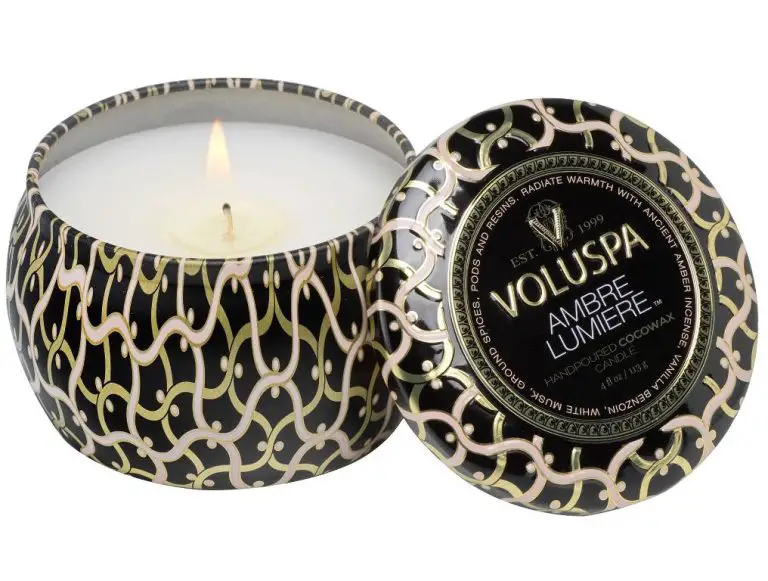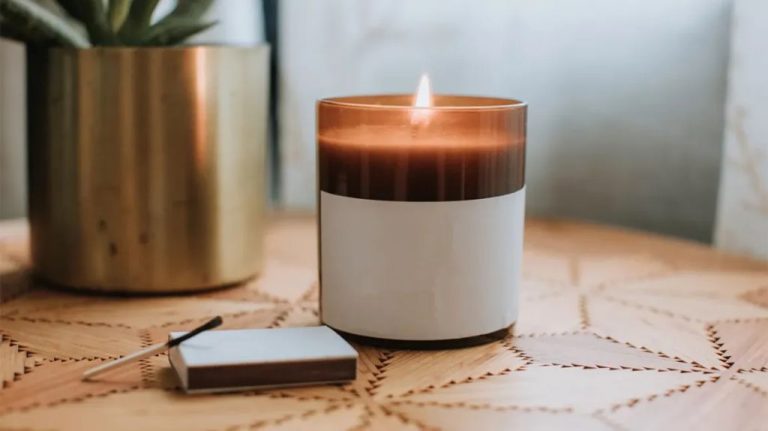What Kind Of Candles Are Used For Wax Play?
Wax play is a form of sexual sensation play that involves dripping or pouring warm wax onto a partner’s naked skin for erotic enjoyment. It provides unique sensations from the heat and texture of the wax as it lands on the body. Wax play allows couples to explore sensory stimulation and power dynamics in new and exciting ways.
Safety should always come first with wax play. Be sure to test the temperature before pouring onto skin, keep away from eyes and other delicate areas, choose appropriate candle wax, and have a safe word in place. When done properly, wax play can be an intimate, arousing experience for consenting partners. However, there are risks if safety precautions are not followed.
Wax play has grown in popularity in recent years as an adventurous form of foreplay. It allows couples to safely try something new and taboo. With the right understanding and precautions, wax play can be sensual and satisfying for both partners.
History and Origins
Wax play is believed to have originated from BDSM culture in the 1960s and 70s. It started as a way for kinksters to explore hot wax sensations in an intimate setting. According to Wildfire Oil, the practice of pouring hot wax on a partner’s skin for erotic pleasure dates back centuries and has been depicted in art and literature throughout history. The Marquis de Sade was one of the first literary figures to describe hot wax play in his erotic novels in the late 1700s.
The use of candles and wax gained popularity in BDSM circles in the 20th century as a form of temperature play and sensation. It allowed partners to safely explore intense sensations and power dynamics. Wax play remained a niche kink practice until the rise of the internet made information and supplies more accessible to the general public. Now wax play is practiced by kinksters and sensual lovers alike. It continues to grow in popularity thanks to media representation in music, TV, and film. Overall wax play’s origins come from BDSM but it has expanded as a versatile form of sensual temperature play for all.
Types of Wax
When selecting wax for wax play, the three main types are paraffin, soy, and beeswax. Each has their own benefits and drawbacks.

Paraffin wax is derived from petroleum. It has a low melting point, making it easy to use for wax play without burning the skin. However, some find the scent of paraffin unpleasant. Paraffin is not environmentally-friendly since it comes from fossil fuels. But it is affordable and readily available at most stores (Source).
Soy wax is made from soybeans. It has a clean, light scent that many prefer over paraffin. Soy wax is also better for the environment. However, it has a higher melting point than paraffin, so care must be taken to avoid burning. Soy wax tends to be more expensive than paraffin as well (Source).
Beeswax is all-natural wax made by honeybees. It has a pleasant, honey-like aroma. Beeswax melts at a similar temperature to soy wax, so it requires caution when pouring to prevent burns. But beeswax is non-toxic and biodegradable. The main drawback is beeswax can be quite expensive compared to other waxes (Source).
Candle Selection
When selecting candles for wax play, there are several factors to consider to ensure a pleasurable and safe experience.
Candle size is one of the most important considerations. Larger candles like pillars or tapers hold more wax and can sustain longer scenes. Smaller candles like tea lights contain less wax and burn out faster, so are good for beginners or short sessions. The candle’s diameter also affects how quickly the melted wax falls onto the skin.
The candle’s shape impacts sensation. Taper candles allow the wax to pool at the tip before dripping, producing a more intense sensation. Pillar candles drip wax from the sides, creating a lighter sensation. Votives and tea lights flow wax more slowly due to their contained design.
Wick type affects the candle’s burn rate and wax temperature. Cotton wicks give a hotter flame and wax pool versus wood wicks. Too large of a wick can overheat the wax. Testing different wick types to find the desired sensation is recommended.
Overall, it’s ideal to use candles designed specifically for body application. Smooth, long-burning wax like soy, paraffin, or beeswax is recommended over scented candles, which may irritate skin. Testing a small area first is advised.
For more guidance, refer to: https://storables.com/articles/what-candles-are-safe-for-wax-play/
Preparing the Candles
When preparing candles for wax play, it’s important to take certain steps to ensure safety and maximize sensation. According to the Reddit thread on r/candlemaking, one key step is trimming the wick before use (Making candles for wax play : r/candlemaking, 2022). The wick should be trimmed to 1⁄4 inch to help prevent splattering and regulate the size of the wax pool. Lengthy wicks can create large hot wax pools that are difficult to control.
It’s also advised to avoid scented and additive-heavy candles, as the Reddit users report skin irritation from certain fragrance oils. Stick to basic, gentle ingredients like soy, beeswax, or unscented paraffin, and avoid extra colorants and scents (Making candles for wax play : r/candlemaking, 2022). Simple, natural candles allow you to focus purely on the sensorial experience of the wax against the skin. Well+Good likewise recommends seeking out candles made specifically for body use, like those containing nourishing shea butter (A Beginner’s Guide to Wax Play, So You Can (Safely) Turn Up the Heat in the Bedroom, 2022).
Taking the time to properly trim wicks and select additive-free candles creates the ideal set-up for safe, satisfying wax play.
Wax Temperature
The ideal wax temperature for wax play is between 43-50°C (110-120°F). This allows the wax to be warm without being dangerously hot. Temperatures above 60°C (140°F) can cause burns. Controlling the temperature is crucial for safety and pleasure.
Paraffin wax candles typically melt between 47-65°C, while beeswax melts around 62-65°C. Soy candles fall in the middle at 135-145°F. To precisely control temperature, use a thermometer and double boiler. Heat the wax slowly, stirring frequently. Remove from heat before desired temperature so the residual heat doesn’t overshoot. Let the wax cool slightly before play. Test on yourself before a partner.1
Another method is to pour wax from a height above skin, allowing it to cool as it falls. Higher drops make cooler wax. Adjust the height until desired sensation is achieved. Work on a small area first to gauge temperature before expanding play space.2
With care and preparation, wax play allows exciting sensation play at customizable temperatures.
Safety Tips
When engaging in wax play, it’s important to follow some basic safety precautions to avoid burns or other injuries. Here are some key tips:
To avoid burns, always test the temperature of the wax on yourself first before dripping it on your partner. Hold the candle high enough above the skin so the wax has time to cool as it falls. Start with larger muscle groups like the back or thighs before moving to more sensitive areas. Never pour wax directly from the container as this can create hotspots.
Practice basic fire safety with candles. Tie back long hair, trim wicks, place candles on flame-proof surfaces, and keep away from flammable materials. Have a lid or damp towel ready to extinguish candles. Avoid leaving burning candles unattended. Keep a fire extinguisher on hand as a precaution.
After a wax play session, have basic first aid items available like aloe vera gel, antibiotic ointment, and bandages in case of any skin irritation. Avoid waxing over sunburns, cuts, bruises or other irritated skin. Be prepared to provide aftercare if needed.
Overall, wax play can be enjoyed safely with some simple precautions. Test temperatures, use low burning point candles, avoid delicate areas, watch open flames, and have first aid supplies nearby. With some care and awareness, wax play can be an exciting, sensual experience for consenting partners. For more safety tips, see How to Do Wax Play Safely.
Sensation Play
Wax play is often used in BDSM and sensation play as a way to create intense and unpredictable sensations. The shift between the hot wax hitting the skin and then cooling and hardening provides a unique tactile experience. The unpredictability comes from not knowing exactly when and where the next drop of wax will land. This allows the top to build anticipation and surprise the bottom, creating arousal through sensations of the hot wax.
The intensity of the sensation can be controlled by factors like the temperature of the wax and the candle’s height above the body. Hotter wax and closer proximity to the skin create more intense sensations. Wax play ranges from a tingly feeling from warmer wax to intense sensations from hotter wax that may border on pain. This spectrum allows partners to explore different sensation intensities together.
The wax itself also provides unique sensations as it cools on the skin. The person may feel the wax stiffening or crackling as it hardens, and this can be part of the appeal. The tension from the hardened wax sticking to the skin combined with the cold sensation as it cools provides sensory stimulation and feedback.
With proper safety precautions, wax play allows couples to create exhilarating sensations of heat, intensity, and unpredictability. The variety of feelings from dripping hot wax to cooling wax keeps the body on alert and engaged. This sensory play creates strong physical and emotional connections between partners.
Aftercare
Proper aftercare is essential for treating the skin and soothing any irritation or inflammation after wax play. The skin should be cleaned thoroughly to remove any wax residue. An oil like baby oil or coconut oil can be massaged into the skin to help break down remaining wax and moisturize the area.1 Lukewarm water can also be used to gently wipe off wax. Be very gentle when removing wax to avoid damaging the tender skin.
Apply a soothing moisturizer like aloe vera gel to the areas that had wax on them. This will provide cooling relief to the inflamed skin and help with healing. The skin may be extra sensitive for 24-48 hours after so continued application of moisturizer can aid in recovery.2 Loose, comfortable clothing that doesn’t rub on the treated areas should be worn while healing. Check in with your partner during aftercare and provide reassurance and comfort as needed.
Conclusion
In summary, wax play can be an exciting and pleasurable form of sensation play when done safely and consensually. It is important to select the proper type of candle, such as paraffin or soy, and to test the wax temperature before applying to the skin. Beginners should start slowly, communicate boundaries clearly, and keep safety equipment on hand. With some basic preparation and precautions, wax play can be an amazing way for couples to explore new sensations and intimacy.
When delving into wax play, go slowly and start with small, tolerable amounts of wax until you get a feel for your partner’s preferences. Communicate clearly every step of the way. While wax play carries risks, they can be minimized with some simple safety tips. Always keep water and first aid supplies nearby. Discuss aftercare needs as well since wax can dry out skin. With a bit of care and caution, wax play can become an exciting new element in your intimate life.






